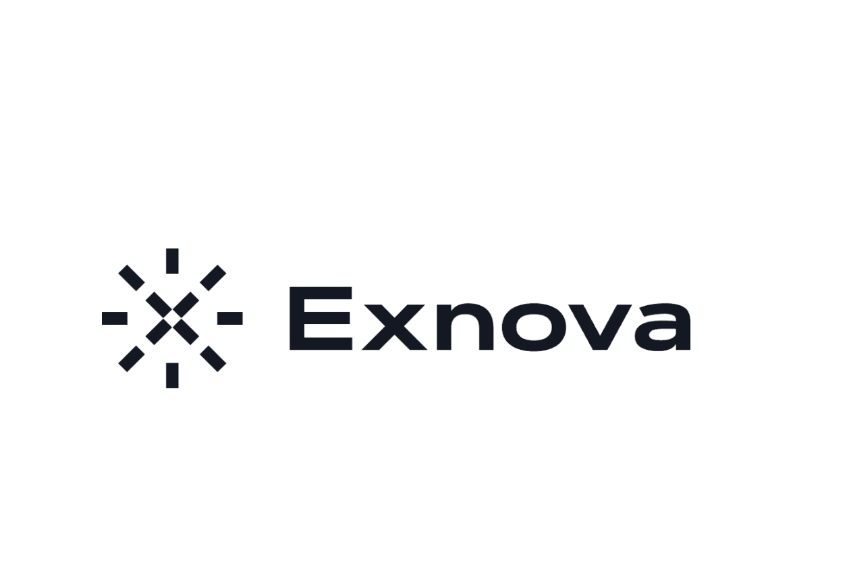Level II data is also referred to as “market depth” as it shows the number of shares, contracts or lots available at individual prices.
It is also commonly referred to as an order book because it shows the range of orders placed and waiting to be filled. An order is filled whenever buyers and sellers in the market agree to trade at a given price.
Level I market data
Level I data includes:
Bid Price: The highest price at which market participants are willing to purchase an asset or security.
Bid Size: The quantity of an asset that a market participant is willing to buy at a bid price. This may include a number of shares (e.g. shares), contracts (e.g. futures) or lots (e.g. foreign exchange). Sometimes you want to divide this number by 100 (sometimes with other numbers) to reduce the number of digits you use.
Ask price (also known as offer price): The lowest price at which market participants are willing to sell an asset or security.
Ask Size: The quantity of an asset that a market participant is willing to sell at the ask price. This may include shares, contracts or lot numbers.
Market Price (sometimes Last Price): The price at which the last transaction was settled.
Market size (often last size): The number of shares, contracts or lots involved in the previous trade.
Traditional technical analysis involving trades based on price action or indicators involving variations in price and/or volume relies on Level I data.
Standard Level I data is usually visible within the broker. For example, here is Level I data for Google (GOOG) stock.
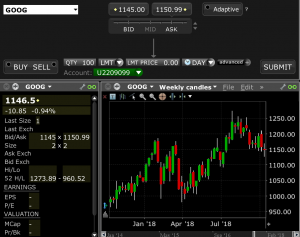
This includes bid, ask, current market price, and current size (both bid and ask sizes, denoted “2 × 2,” approximately 200 shares).
Level II Market Data (Market Depth/Order Part)
Level II data includes multiple bids and ask/offer prices. This shows different market players bidding and offering at different price levels. In addition to Level I data, Level II includes what other market makers set buy and sell levels for.
What is a Market Maker? They are securities or asset dealers who provide liquidity to the market by always being willing to buy or sell at a specific price.
For most traders, Level I data is available through brokers. And often, but not always, for free.
For those who rely on more in-depth data, like what size order size is at what price, Level II data is a must have. This is often provided by brokers for a fee. It may be free or not offered by all brokers. Level II data is usually more expensive than Level I data on stock and futures trading platforms. For many Forex brokers, it is regularly free.
As an example of the difference between Level I and Level II data, let’s say you are trading a stock with a market price of $25.00. The bid is $24.98 and the ask is $25.02. This is standard Level I data.
Level II includes a bid list and raises or lowers the ladder price. For example, you might see bids of $24.95 and $24.92 and ask for prices of $25.05 and $25.08, in larger sizes than you would see in a regular Level I bid. Typically, there will be about 5 to 20 different bids and prices.
Below is a list of information contained in Level II data.
Multi-Bid Prices: Level II data includes bids from Level I data and all other bid prices below this figure. In the most liquid markets (the most traded markets), you may see a bid price for each individual price increment (e.g. $0.01 of a large stock). If an asset or security has a large bid/yoga spread (i.e., the difference between bid and ask is greater than 0.1% of the security’s price), it is likely that there is a significant bid and ask spread for market depth data.
Bid size: The quantity of an asset that market participants are willing to buy at different bid prices.
Multi-request price: This includes requests for Level I data and requires a price higher than this figure. As is the case with bid data, in most liquid markets, ask prices are usually relatively tight. In a less traded and more illiquid market, bids will go farther apart.
Request Size: The quantity of an asset that market participants are willing to purchase at various ask prices.
Example of Level II market data
The following shows examples of Level II data for NASDAQ stocks.

At the top of the chart you will see bid (160.950) and ask (160.960) prices or standard level I data.
Level II data includes bids for both the left-middle column and the right-middle column.
Immediately to the left of the bid price (column starting with 160.950) is the size or number of shares offered at that level.
The next column is the cumulative size. This refers to the total number of shares offered to support the stock price before it declines.
The same is done on the request side (right side).
The leftmost and rightmost columns represent the different market makers.
Many traders like to see the cumulative number of stocks offered at each level. When there is an imbalance, it can indicate which way the market is leaning in relation to a particular security or asset. Traders can ask for an overall understanding of where the market is headed by looking at the sizes offered when bidding.
In this particular example, more shares are being offered to the requesting side (left), indicating that buyers are more powerful than sellers. As such, this could signal a bullish bias to traders as long as level II data/order book betting is in the decision-making process.
In terms of a further example, if we rely solely on Level I data, the Ford (F) bond below is $80K on bid and $3K on request. That means the market is clearly bullish or you’re expecting this particular security to go higher.
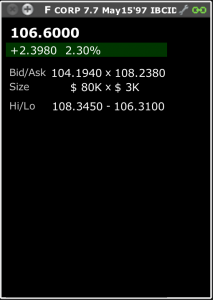
For the next Petrobras (PETBRA) bond, the size is $250K at bid and $155K at request. A bid greater than the request indicates a bullish market.
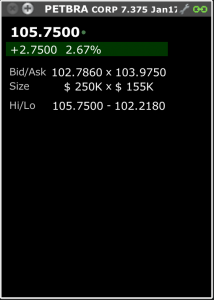
For Omega Healthcare Investors (OHI) stock, you will see sizes approximately 2x larger than bid when requested. This indicates a weaker slope.
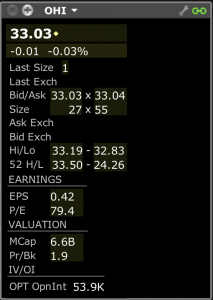
Some traders will look into the asymmetry of where the latest trades are going. As more deals get closer to bidding (lower prices), the price may tend to go down. If more trades move closer to the request (higher price), this may indicate that the price tends to rise.
None of this is idiot proof, of course. Orders can come at any time to influence the direction of the market.
conclusion
Level II market data, also known as “market depth” and order book, looks at the bid and asks price and size beyond the bid, and asks for the price closest to the market price in Level I data.
Day traders can receive both Level I and Level II market data through their brokerage. Level II data must be available for stock and futures trading. However, additional charges may apply for this. Some offer Level I and Level II data for free, but you can compensate by charging a higher per-transaction fee.
Many forex brokers provide level II market data, some do not. Many only offer level I data and charting platforms.
Level II data is generally not used alone as a trading strategy. Day traders usually use it in conjunction with technical analysis strategies or fundamental analysis. However, it can be an additional form of analysis that can help better inform your trading decisions.





